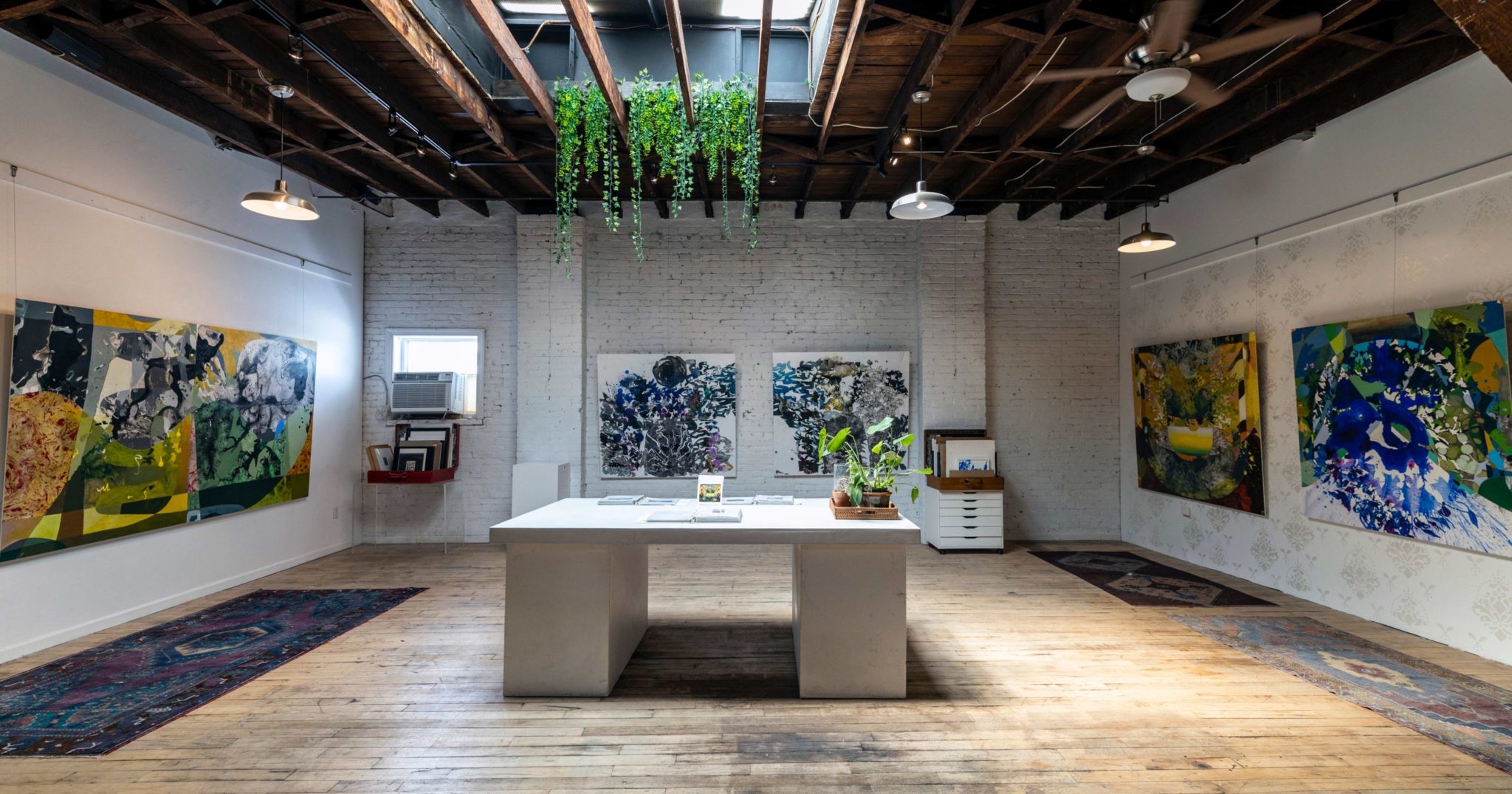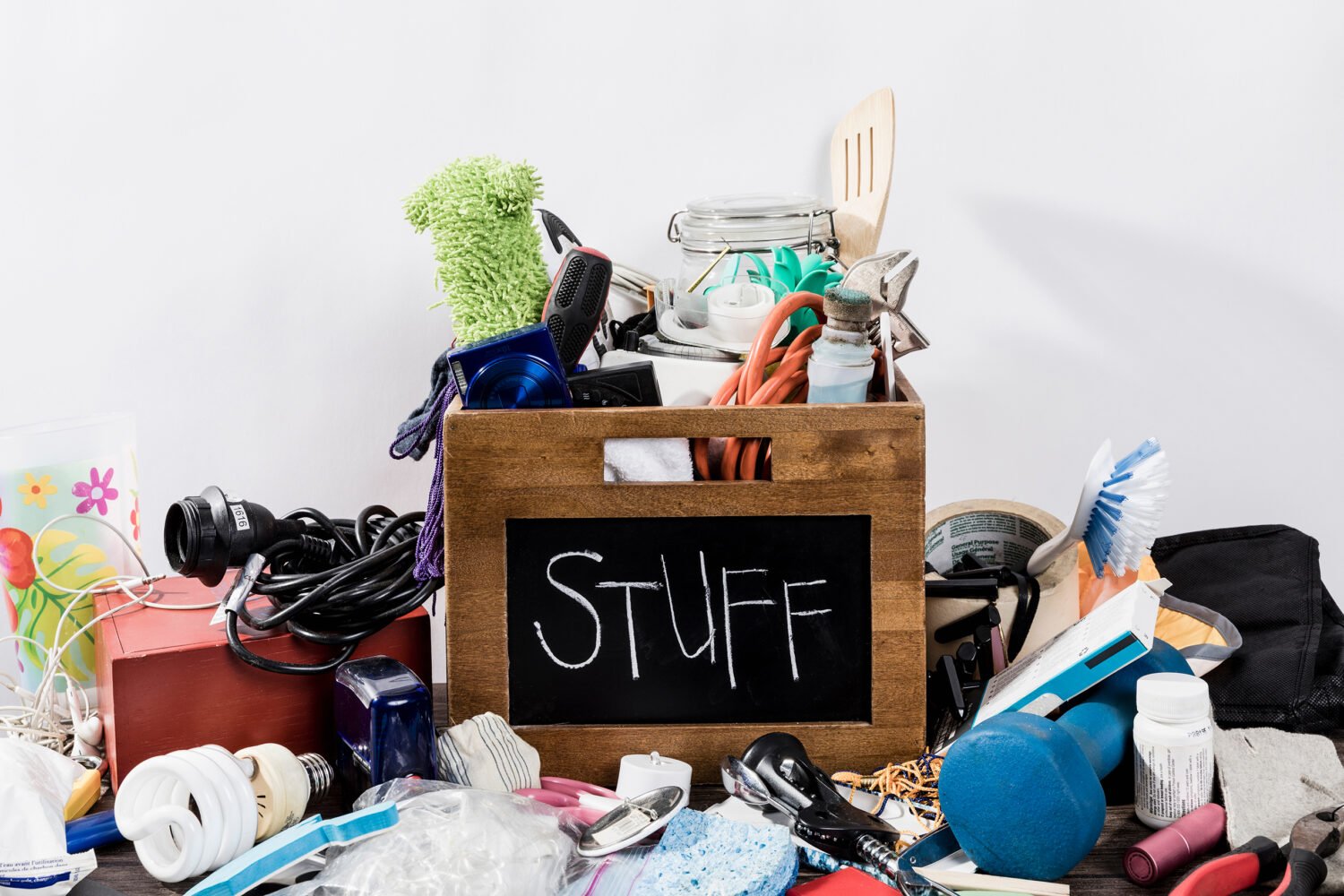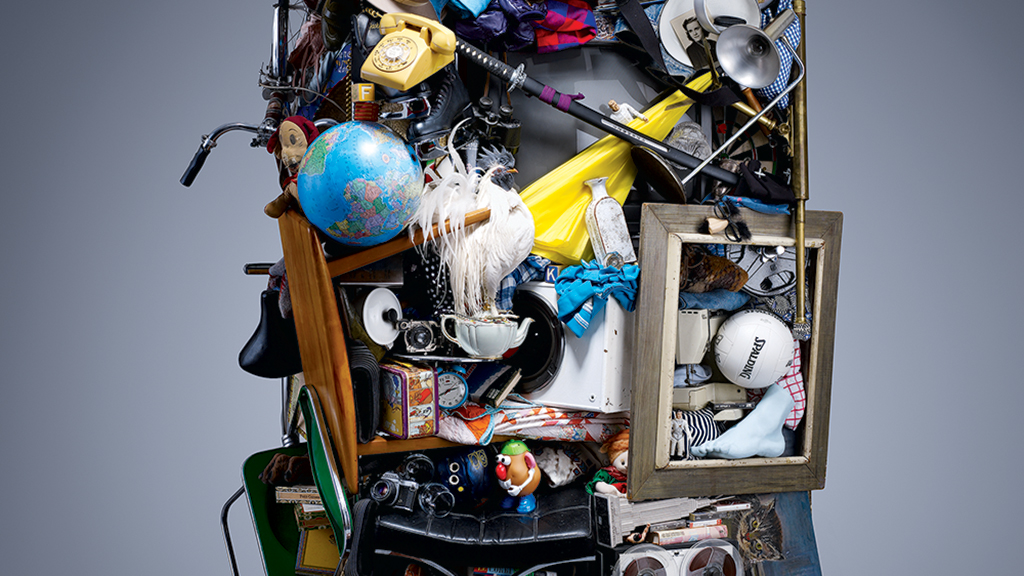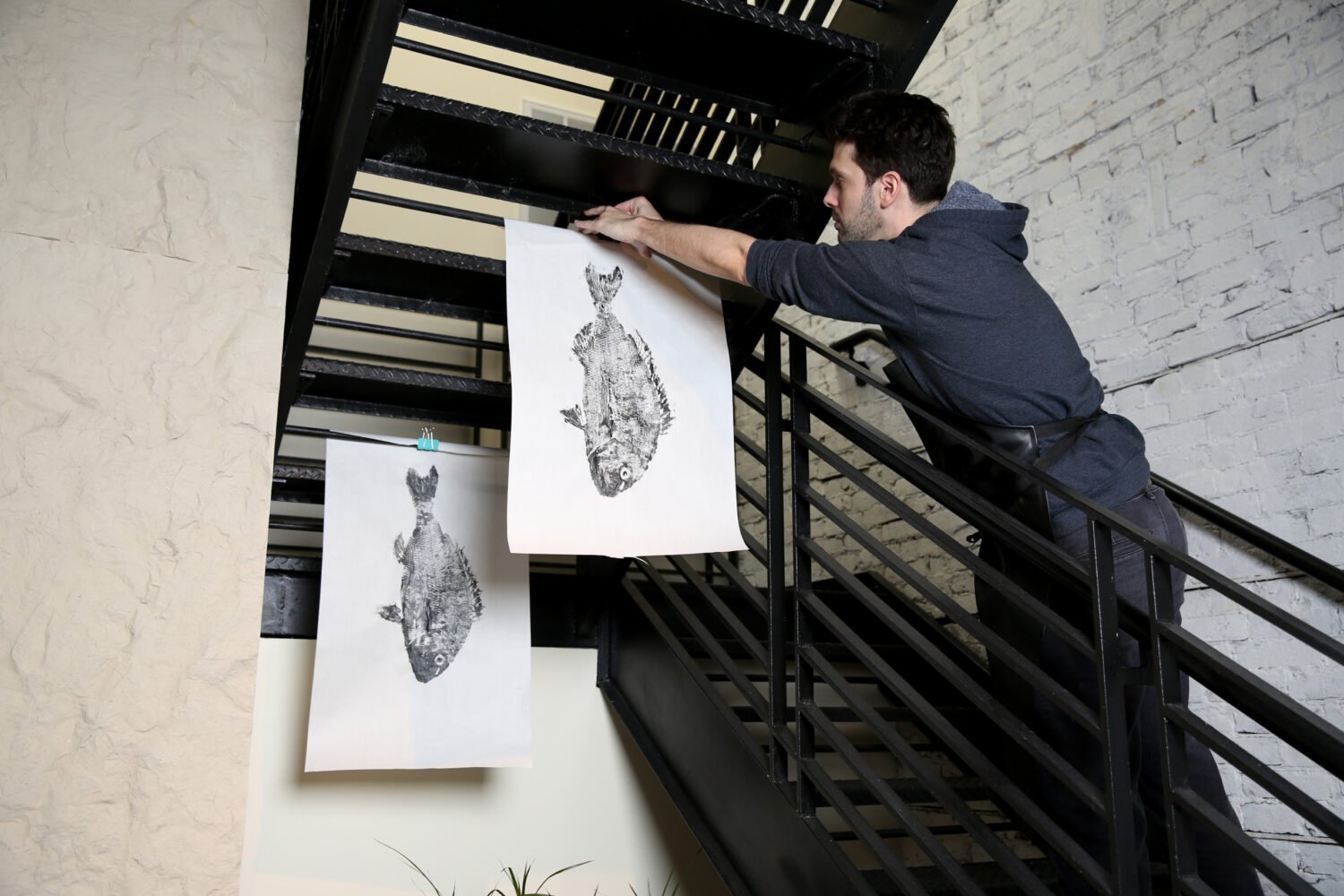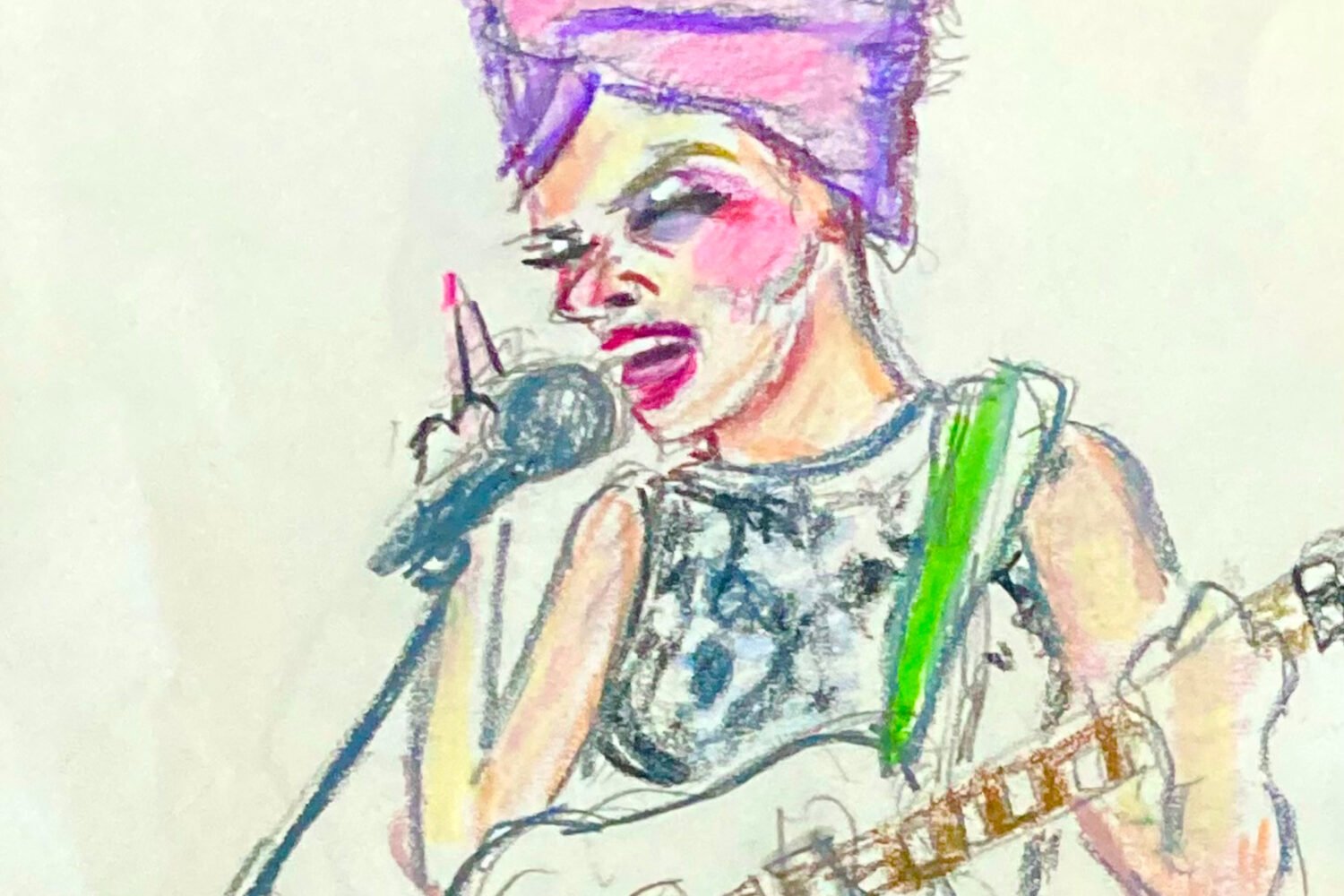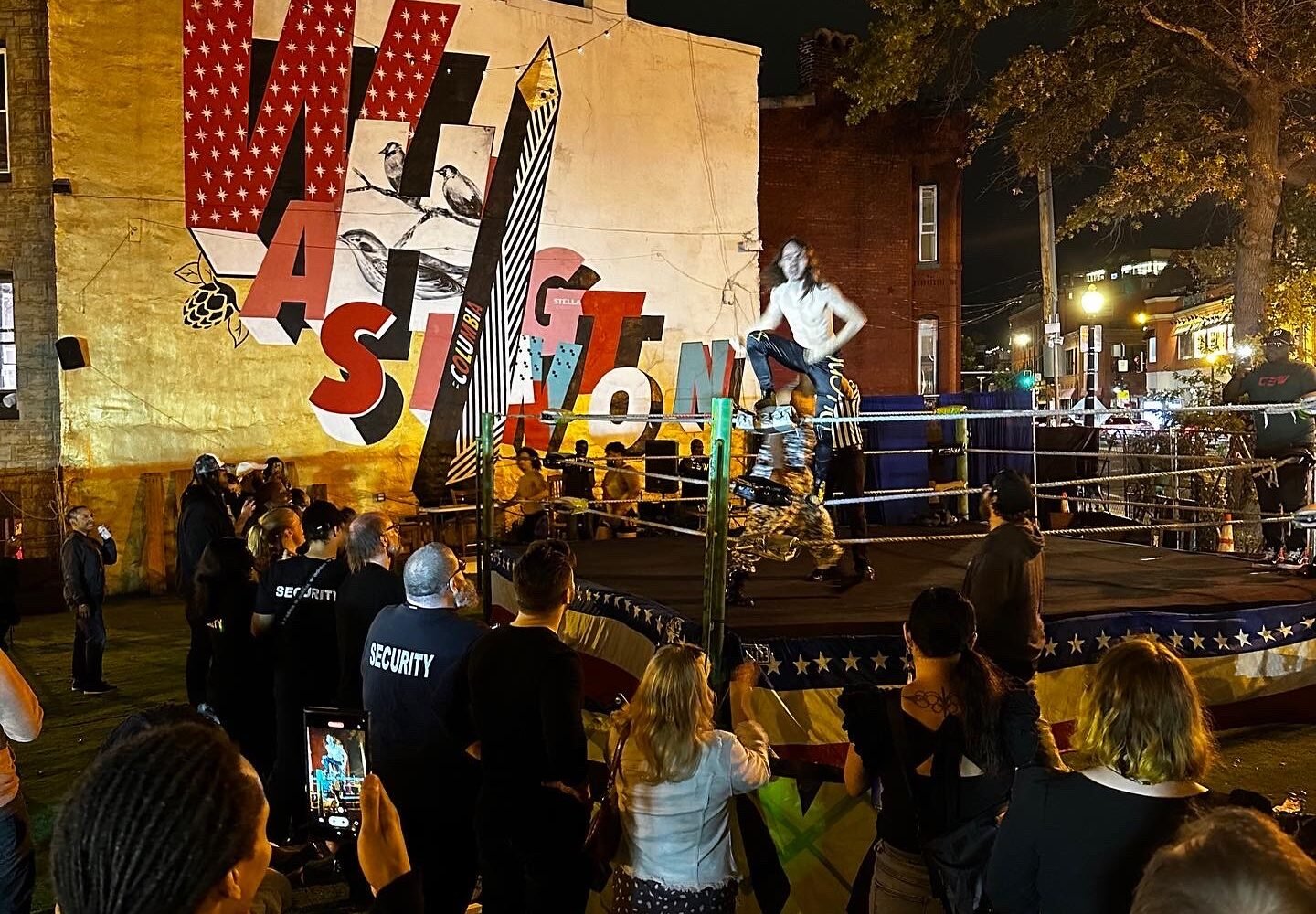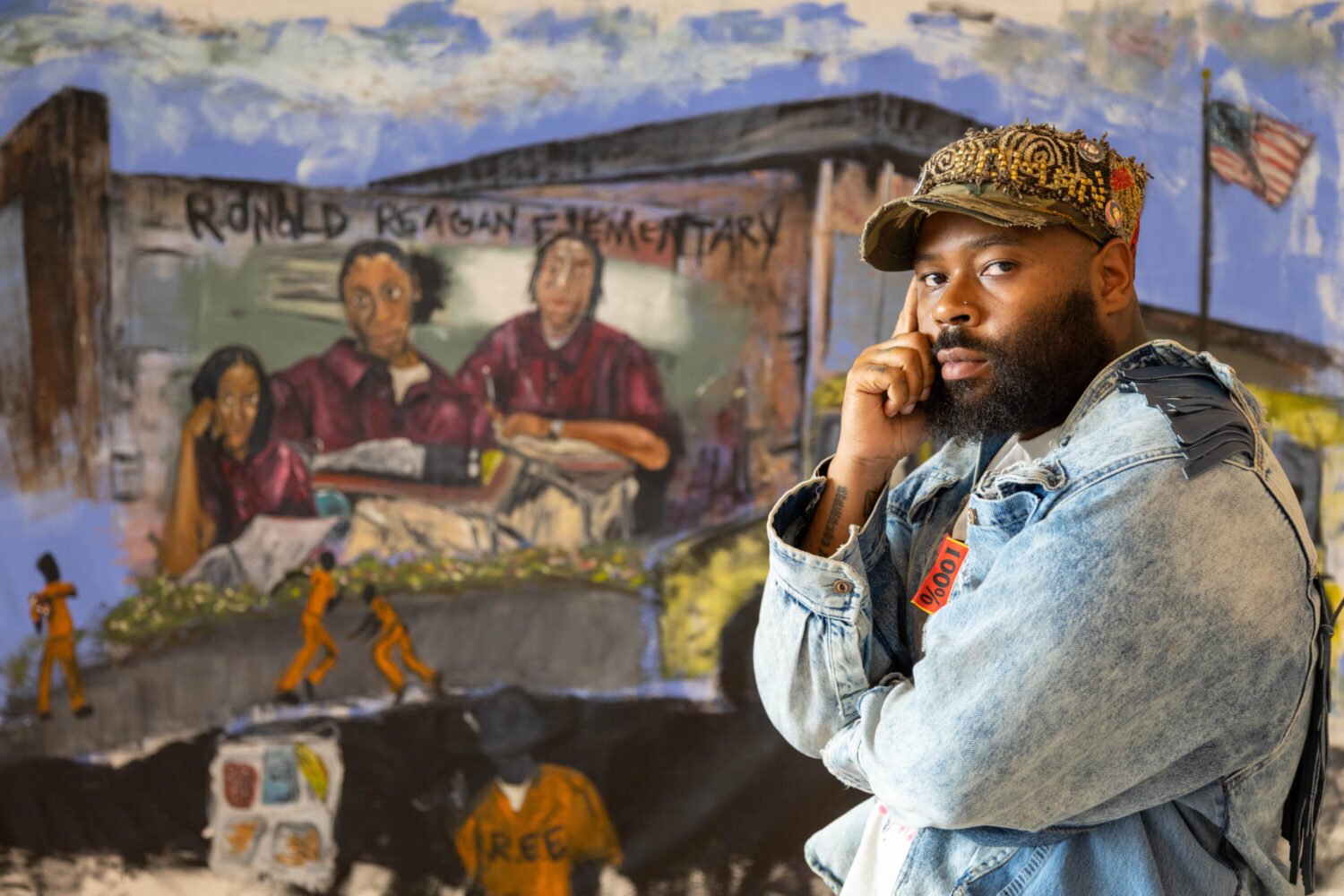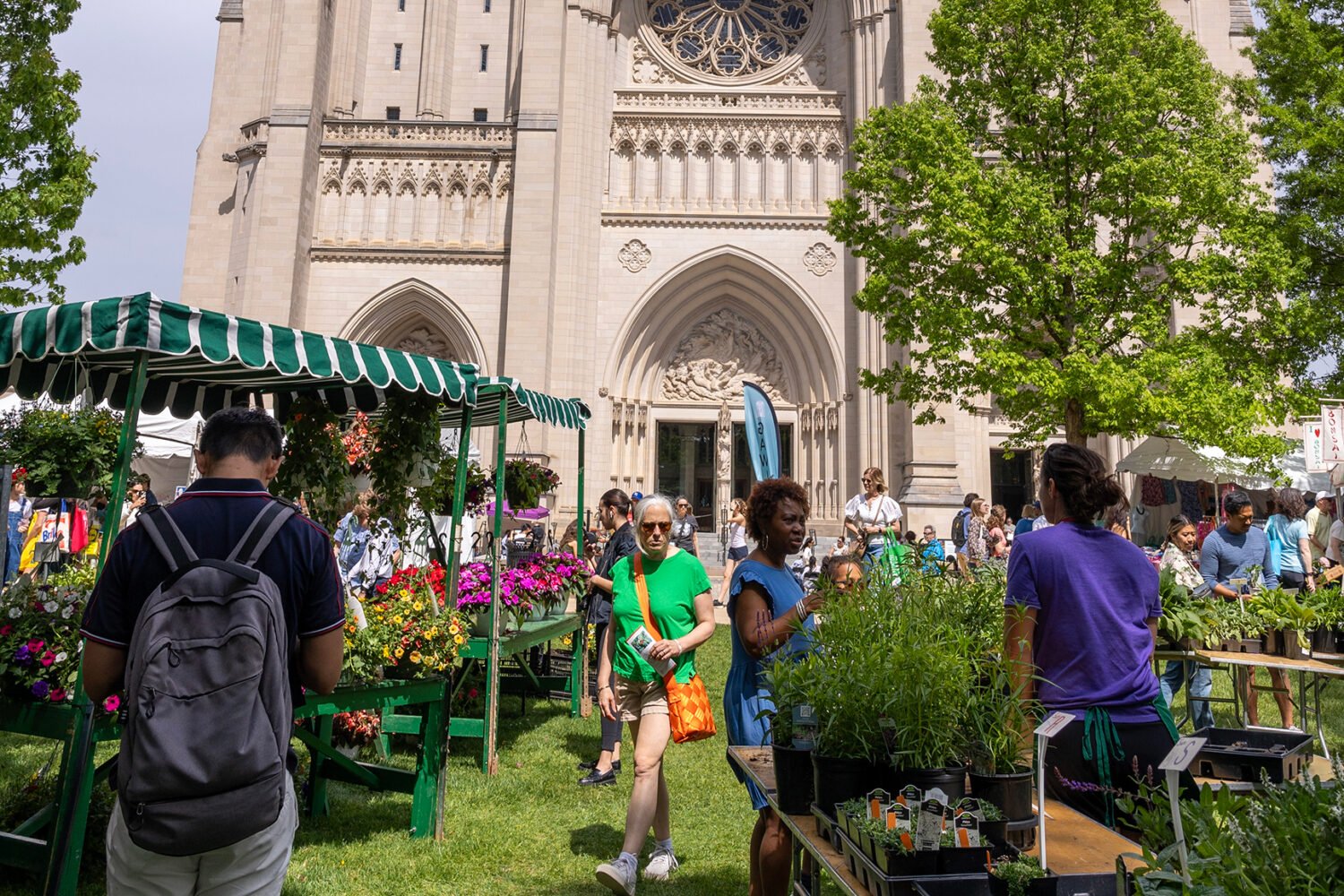Though it’s not always obvious where to find them, Washington is full of working art studios. Here are a few spots where many artists create under one roof. Some have public hours; others are by appointment only. All are excellent places to support the local scene and procure one-of-a-kind pieces.
1. 52 O Street Studios
52 O St., NW
This enclave of artists in Truxton Circle has been around since the 1970s. The brick-faced former factory houses about 50 creatives, including painters, photographers, and fashion designers. The best way to get a sense of the work being made there is on Instagram—follow @52ostreetstudios. Pre-pandemic, the studios would occasionally open up for events. These days, you can make an appointment with individual artists. The building is also home to two galleries: Homme, which features local work by independent and emerging artists, including from the studios upstairs, and Morton Fine Art, a gallery that shows pieces by 25 artists around the world, including contemporary art from Africa and the African diaspora.
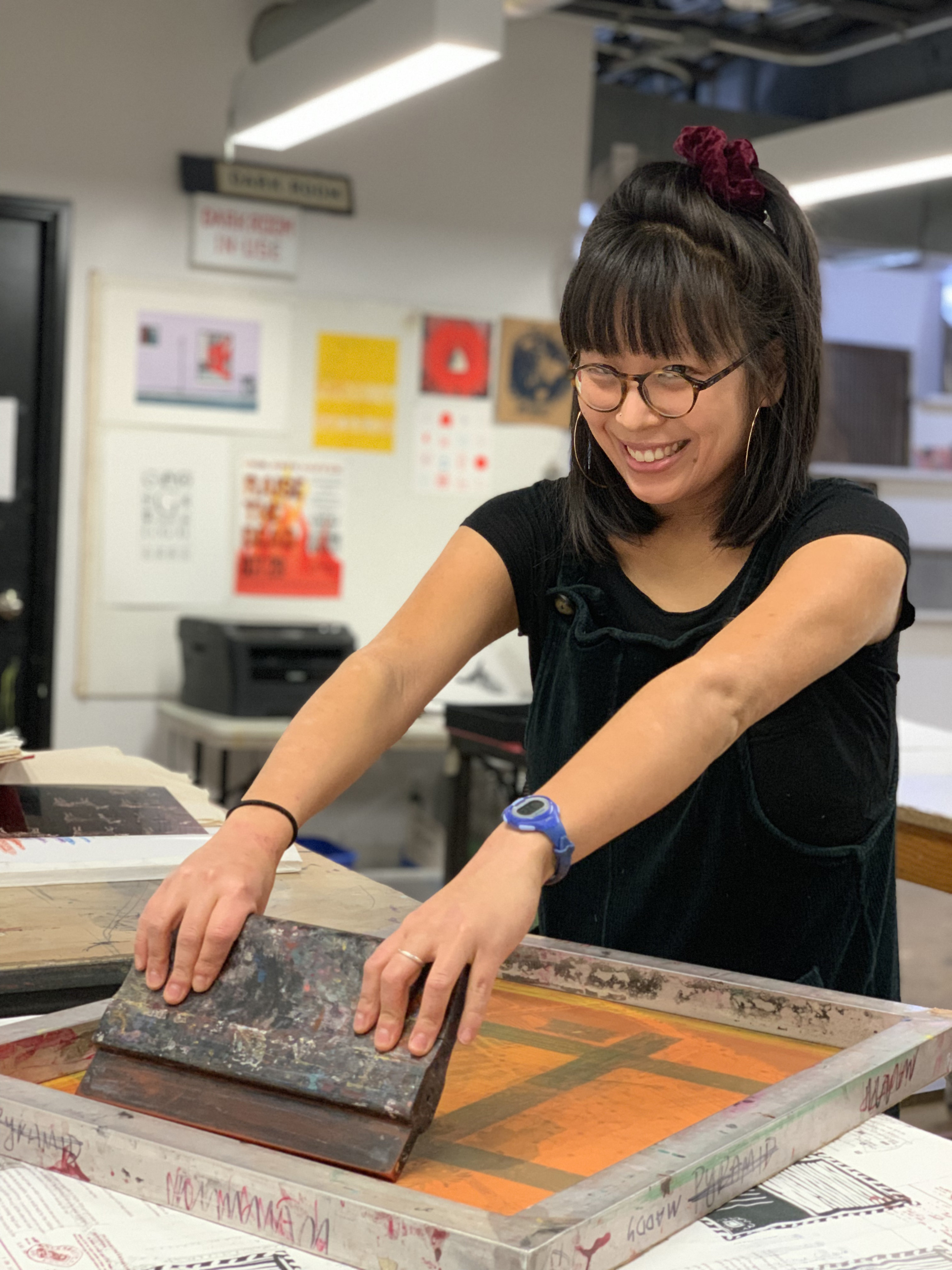
2. Pyramid Atlantic Art Center
4318 Gallatin St., Hyattsville
A huge concentration of artists can be found along the Route 1 corridor stretching from Mount Rainier to Hyattsville. While there are hundreds of studios and artist collectives in the aptly named Gateway Arts District, few are as publicly accessible as Pyramid Atlantic, which is open five days a week and specializes in printmaking and papermaking. Among its offerings: 17 private art studios, a gallery (where most of the art is under $1,000), community studios that can be rented by the hour, and a shop selling work by the resident artists (visits to their studios are by appointment). More info here.
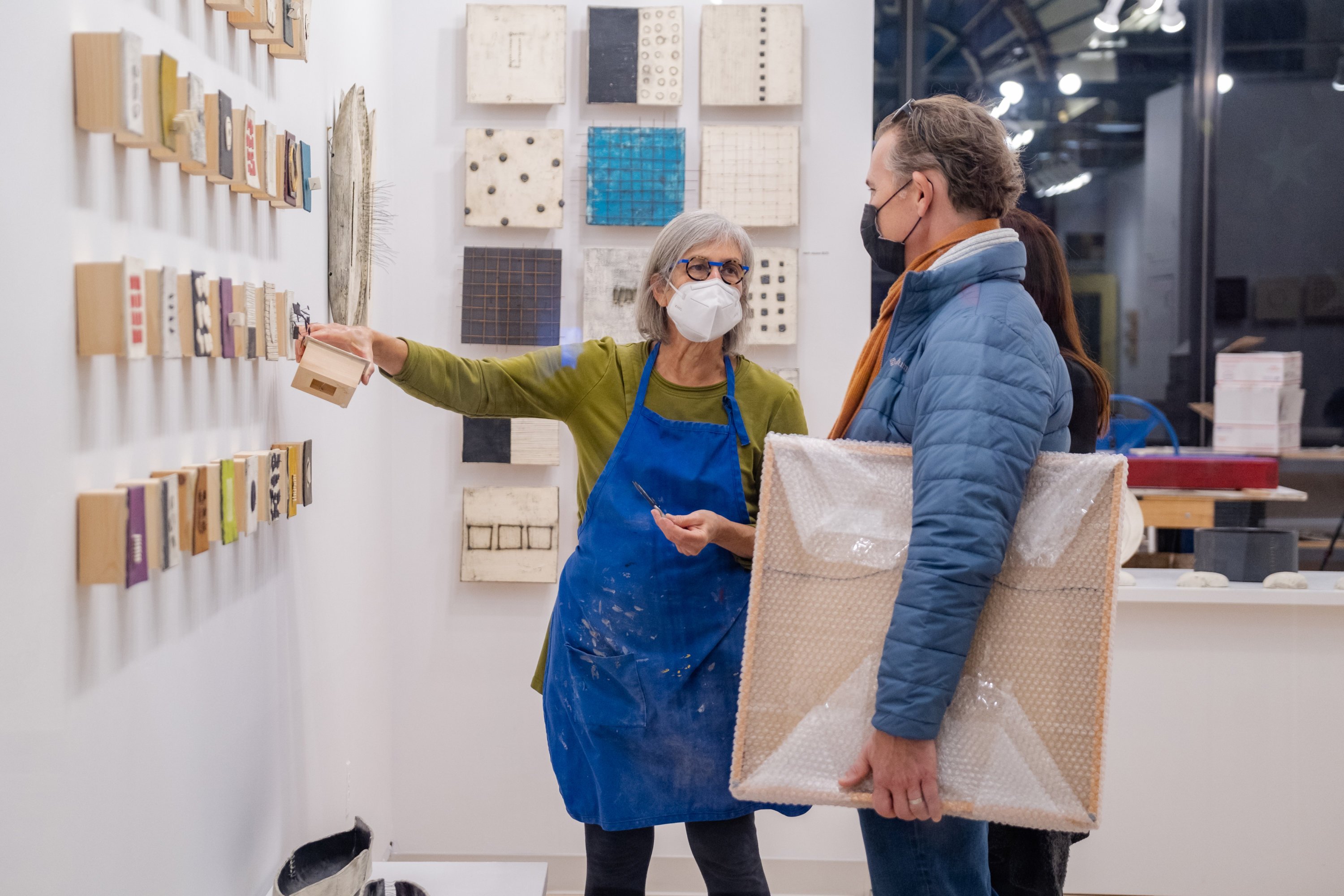
3. Torpedo Factory Art Center
105 N. Union St., Alexandria
The nation’s largest community of open artist studios under one roof isn’t in Brooklyn or Oakland. It’s in Old Town. More than 165 artists work in the former munitions factory on the waterfront. Before Covid, their spaces were accessible to the public much of the week. While the building is still open five days, the hours of individual artists are now understandably spottier. So if there’s particular work you want to see, best to schedule in advance. Profiles of the artists—who run the gamut of styles and mediums—are on their website.

4. Stable
336 Randolph Pl., NE
In 2019, right before the pandemic, 25 working studios plus a gallery opened in this repurposed horse stable in Eckington. Though the unfortunate timing means Stable has flown mostly under the radar, a peek inside would reveal dozens of resident artists producing collage, paintings, sculpture, and photography. The studios are closed to the public right now, but executive director Maleke Glee is planning programming in the spring and summer. He says there will be art and crafts for kids so parents can peruse artwork and chat with the artists. Join Stable’s mailing list and learn about its residents here.
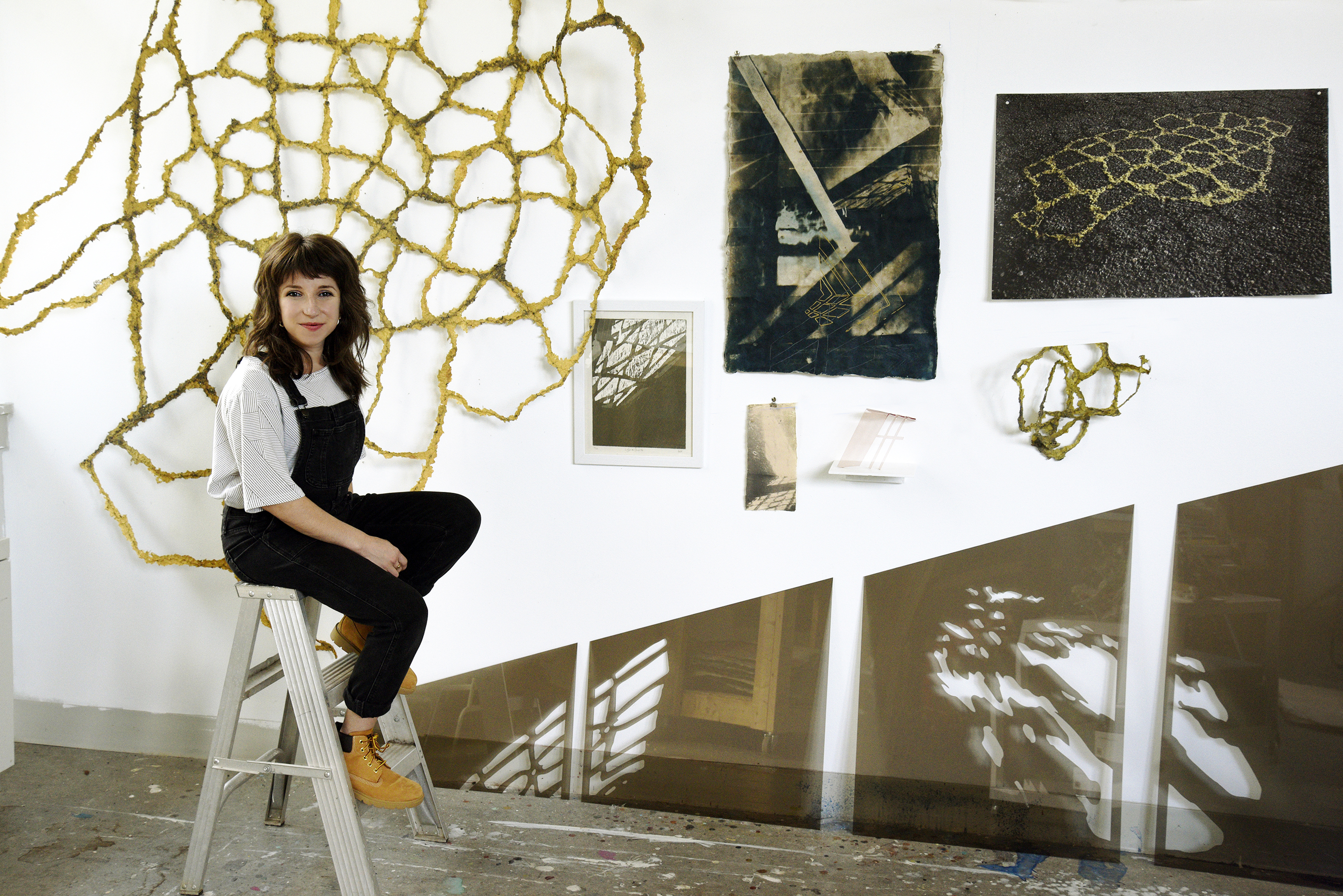
5. Arlington Arts Center
3550 Wilson Blvd., Arlington
In addition to a wide selection of classes for kids and adults, the nonprofit hosts a dozen resident artists, who work in onsite studios. The current cohort includes painters, photographers, sculptors, and mixed-media artists. You can learn about them and find their contact information on their website. They show work publicly in the facility’s Wyatt Residence Artist Gallery and, a few times a year (Covid permitting), during exhibition events. Appointments are required to visit individual studios. The center is also home to eight other galleries that show work from all over.

